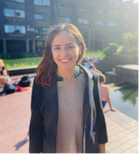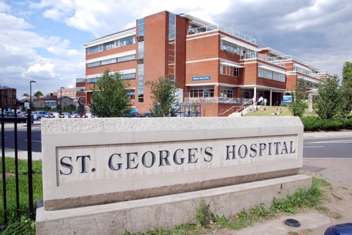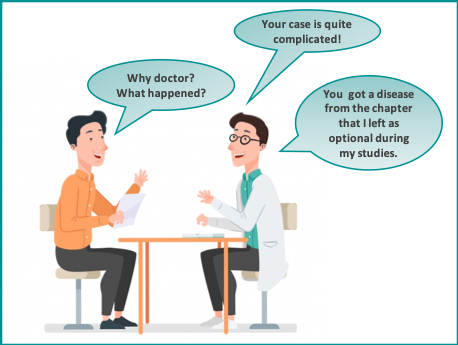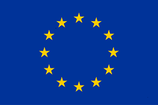 Veronica Giorgione Nationality: Italian Work Institution: St George's University of London Research Interest: Preeclampsia, preterm delivery and fetal congenital heart disease Favourite Hobby: Tasting new and delicious food. I am a foodie ;) In September 2018, after working as a junior doctor for 5 years at the San Raffaele hospital in Milan, I completed my Obstetrics and Gynecology training. Then, I had to answer the question: What next, what could or should I do? There were two opportunities I had to consider. The first logical option was to start the job I trained for, as an Obs. and Gyn. specialist in Italy. But, as I love a challenge, and as I thought this would have been the safer option, I decided to pick the second opportunity, to apply for the iPLACENTA project as I thought that it sounded more exciting and rewarding in the long run. I then took the plunge and moved to London to commence this incredible experience as a PhD student at St George’s University of London. St George’s University Hospital of London When I arrived in November 2018, the instant positive impact I experienced at St George’s Hospital was incredible. I felt lucky that I knew my two supervisors, Prof. Basky Thilaganathan and Prof. Asma Khalil, who are gifted with being both great clinicians and scientists. It was a privilege to be working with them and gaining the additional knowledge they could provide. Before meeting them, I did not appreciate that these qualities could coexist in one person at such a high level. In just a few weeks, I also realised how amazing the Fetal Medicine Unit (FMU) at St George’s Hospital is and how many pregnant patients are looked after and cared for . The staff immediately impressed me with their dedication, accuracy and hard work. An example of this is a weekly multidisciplinary meeting where all cases are discussed by different specialists and joint decisions are taken. The FMU is a dynamic academic department where several areas of active research are undertaken. The FMU also holds regular research meetings and journal clubs delivered and presented by the research and clinical fellows. I was grateful to be in a position to start my PhD in this committed and stimulating environment. Prof Khalil, Prof Thilaganathan and FMU fellows during one of the regular journal clubs My PhD project relates to the cardiovascular assessment of women affected by preeclampsia in the peripartum period (before and after delivery). Since the commencement of the project, I knew I would need to recruit patients in the following 3 years and that this would be key to the successful completion of it. But a question you may ask is, what is involved in recruiting patients? In all honesty, I was not familiar with this process and it was a new skill that I had to learn. I found it quite unusual compared to my previous clinical job as, whilst working in a clinical setting, patients are the ones who make the request to see a doctor to seek assistance. Whereas in my new situation, I had to be the one to ask patients to assist me and offer them an explanation as to why I was doing it and the reason it was so important. A cartoon that illustrates a funny conversation between a doctor and a patient. This meant that the relationship between me and patients was going to be completely inverse to what I was used to. I had to learn how to explain the goal of my project and get them to volunteer to take part. As this is normally, and perfectly understandably, a traumatic and troubling time for mothers and babies alike, it can be extremely tough to approach mothers to ask for their assistance. However, I have been really impressed and pleasantly surprised by the reactions I received to my request for volunteers. The participants demonstrated a strength and positivity, despite their circumstances, by their agreement to donate their time and blood/placenta samples to research and I think this is because they understood the reason behind it, which was of course to help other pregnant women affected by the same disease.
Because of my obstetric background I can also provide them with useful explanations and observations as they feel free to speak to me on a more informal basis. I have been fortunate enough to build a close bond with many of these women and a lot of them have continued to keep me updated about how their babies and them are getting on, which I have found to be beneficial to both my research and on a personal level. During this process, I’ve also reinforced how fundamental it is to spend time with patients, listen to their stories and communicate a sympathetic understanding of their situation. This has meant that I am improving one of the most meaningful aspects of my job as a doctor, which is to develop my communication and empathetic skills. This has been a curious paradox in view of my previous clinical job, but it is one that I am extremely grateful for. While I miss my clinical job enormously, as I was in a position to be the clinician to help patients directly, my hope is that my research findings will prove useful in the future for considerably more patients than those I would have taken care of during the time I have spent on the project. I would like to take this opportunity to thank all my lovely patients who are taking part in my iPLACENTA project! A presto, Veronica Leave a Reply. |
About the blogBeing a PhD student in a European training network is a life-changing adventure. Moving to a new country, carrying out a research project, facing scientific (and cultural) challenges, travelling around Europe and beyond… Those 3 years certainly do bring their part of new - sometimes frightening - but always enriching experiences. Categories
All
Archives
December 2021
|





 RSS Feed
RSS Feed

18/9/2019
0 Comments